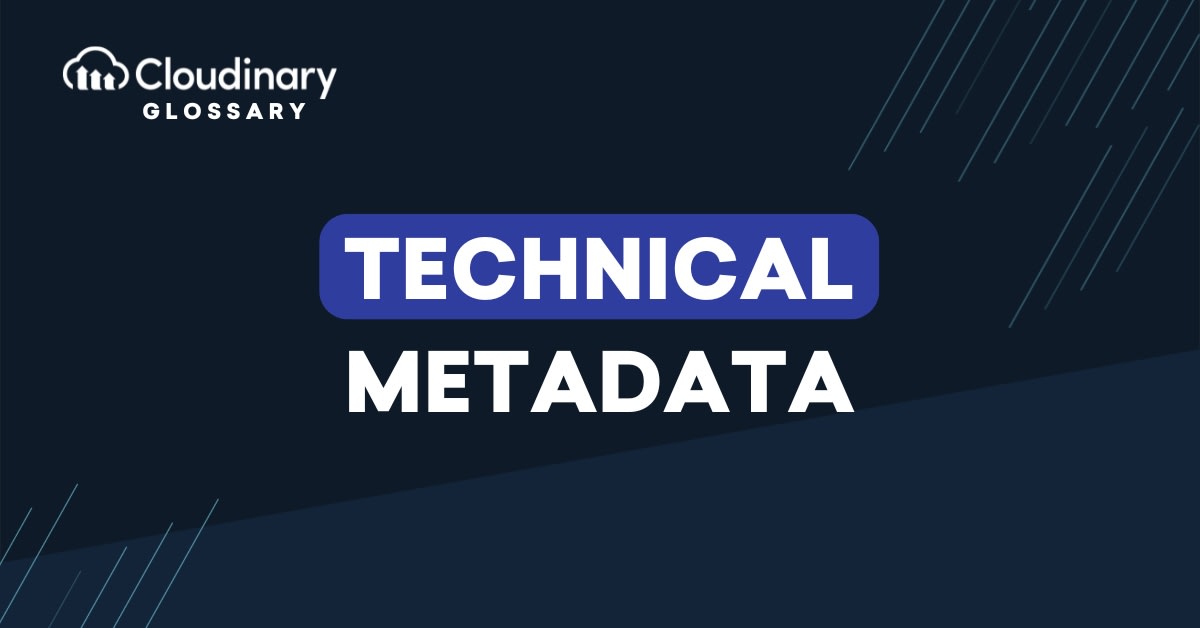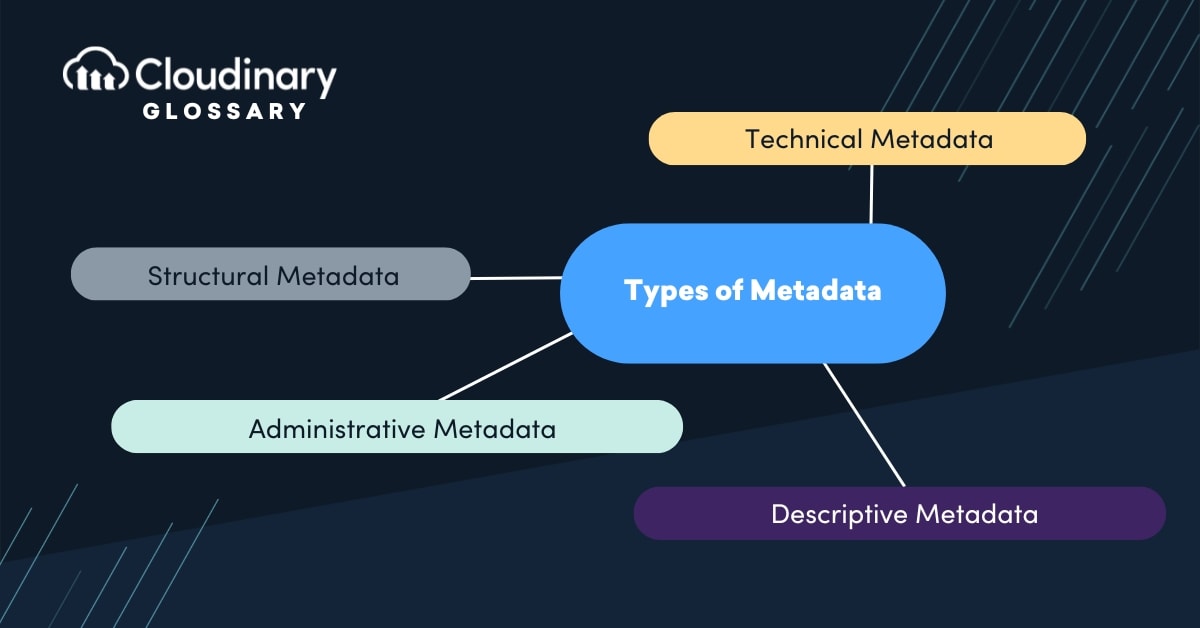
What Is Technical Metadata?
Technical metadata describes the technical properties and specifications of a resource, such as its format, file size, resolution, encoding, and hardware/software compatibility. Typically, technical metadata is generated automatically when a digital resource is created, though it can also be user-defined.
For example, technical metadata for an image file might include:
- File format: JPEG, PNG, TIFF
- Resolution: 1920 x 1080 pixels
- File size: 2.5 MB
- Color Profile: sRGB
- Compression: Lossy or lossless
This type of metadata focuses on how a resource functions and interacts within a technological ecosystem. It’s critical for managing resources efficiently, ensuring compatibility, and enabling long-term preservation.
What Does Metadata Do?
Metadata, including technical metadata, enhances the overall operability of resources by providing the information necessary for their storage, accessibility, preservation, and usability.
Specifically, technical metadata is used for:
- Quality Control: Technical metadata helps ensure files meet required standards for quality, such as dimensions, file size, encoding, and resolution.
- Interoperability: It documents file formats and hardware/software requirements so that the resource can be accessed and used seamlessly across different systems and platforms.
- Preservation: For long-term data archives, technical metadata is indispensable. It provides the information necessary to maintain resources over time, such as specifications for file formats, codecs, and software dependencies.
- Resource Monitoring and Management: Technical metadata tracks details such as file size, storage location, and creation/modification dates, making it easier for organizations to manage large volumes of data.
- Troubleshooting and Error Resolution: Digital assets with technical issues (such as corruption, pixelation, or playback errors) can be diagnosed by examining the technical metadata.
Technical Metadata vs. Other Types of Metadata
To fully understand technical metadata, it helps to compare it to other major types of metadata. Each serves its own distinct purpose in managing resources.
Descriptive Metadata
- Focus: Describes the resource content to aid in discovery and understanding.
- Examples: Title, author, subject, keywords.
- Use: Helps users locate and identify resources.
Administrative Metadata
- Focus: Supports resource management.
- Examples: Rights/permissions, creation date, maintenance history.
- Use: Facilitates ownership, rights management, and file tracking.
Structural Metadata
- Focus: Details how a resource is organized or relates to other resources.
- Examples: Table of contents, chapters, sequences in a multimedia file.
- Use: Supports navigation within complex resources.
Technical Metadata
- Focus: Captures the resource’s physical and digital characteristics.
- Examples: File format, compression type, resolution, bit depth.
- Use: Ensures compatibility, preservation, and management within systems.

Importance of Technical Metadata
Technical metadata is the backbone of resource interoperability and sustainability. Without it, managing and maintaining digital and physical assets becomes a daunting task. Here’s why technical metadata is so important:
Ensures File Compatibility
In an ecosystem where multiple devices, software, and platforms interact, technical metadata ensures that resources can be opened, played, or otherwise processed correctly.
Facilitates Long-Term Preservation
Digital resources are at risk of becoming obsolete without proper documentation of their technical attributes. Technical metadata allows archivists to plan for format migrations and storage upgrades.
Supports Data Integrity and Security
With technical metadata, organizations can ensure their resources maintain quality and consistency. Metadata-driven tools can also flag anomalies, such as unexpected file size changes, that may indicate data corruption or tampering.
Strengthens Workflow Automation
In industries where complex workflows require consistent formats, technical metadata streamlines processes. For instance, media production houses rely on format consistency to ensure efficient editing and publishing.
Optimizes Storage Management
Details like file size and storage location from technical metadata help organizations monitor storage usage and allocate space effectively. This ensures cost savings and resource optimization for data-heavy operations.
Use Cases of Technical Metadata
Technical metadata proves useful across a wide range of industries and scenarios. Here are a few common use cases:
Digital Media Production
In professional video editing, technical metadata is used to manage standards like frame rates, resolution, and aspect ratios. This ensures compatibility between recorded footage and editing software or broadcasting platforms.
Digital Preservation and Archiving
Archivists rely on technical metadata to track file formats and assess risks of obsolescence. For example, knowing that a collection of video files uses an outdated codec allows archivists to plan re-encoding for future accessibility.
Software Development
In application development, technical metadata is used to ensure interoperability between libraries, APIs, and platforms. Versioning, dependencies, and attribute tracking all rely on such metadata.
E-Commerce
Technical metadata in e-commerce product images (such as file size, resolution, and orientation) helps ensure they load correctly and quickly on different devices.
Healthcare
Medical imaging technologies, such as MRIs and CT scans, rely on technical metadata to indicate file formats, bit depth (for image quality), and software compatibility, ensuring healthcare professionals can view and analyze scans accurately.
Artificial Intelligence and Machine Learning
In AI, technical metadata is invaluable for evaluating datasets. Information such as data type, size, and encoding helps researchers determine if the dataset is suitable for training specific algorithms.
Last Thoughts
Technical metadata might not be as user-facing as descriptive metadata, but its significance cannot be overstated. Whether it’s ensuring that a video file can play, a dataset remains compatible with new systems, or a medical scan is accessible decades from now, technical metadata is the key to successful resource management, preservation, and interoperability.
From media production to data-driven industries, technical metadata serves as the behind-the-scenes force that powers organizational efficiency, prevents resource obsolescence, and enables innovation. As our digital world continues to grow, understanding and leveraging technical metadata will remain vital for sustainable management of digital resources.
Also, you may want to try our latest background image tool converters:
- Light Pink Background
- Hot Pink Background
- Coral Background
- Crimson Background
- Dark Pink Background
- Neon Pink Background
- Pastel Pink Background
- Rose Gold Background
- Rose Background
- Magenta Background
- Fuchsia Background
- Orchid Background
- Pink Orange Background
- Red Purple Background
- Salmon Background
- Seashell Background
- Dusty Rose Background
- Pastel Red Background
- Pink Orange Background
- Plum Background
- Raspberry Background

